|
Joy to the world, the vaccines have come. Let earth begin to heal. Let's thank those who delivered them; let every arm prepare for one; and heaven and nature sing, and heaven and nature sing, and heaven and heaven, and nature sing. Is this a Christmas miracle? Let’s not get ahead of ourselves. This is still 2020 after all, and we have a long road ahead. The two COVID-19 vaccines currently in limited distribution were developed in record time, but the development of the technologies behind the vaccines took decades. Let’s look at the two vaccines currently being distributed and what to expect in the coming months. Operation Warp Speed (OWS): A public-private partnership initiated by the U.S. government to facilitate and accelerate the development, manufacturing, and distribution of COVID-19 vaccines, therapeutics, and diagnostics (https://www.hhs.gov/coronavirus/explaining-operation-warp-speed/index.html). This is an interagency program spearheaded by the Department of Health and Human Services. The main goal of this program is to produce and deliver 300 million doses of safe and effective vaccines, with the initial doses available by 2021. So far so good. The Chief Operating Officer of the program is General Gustave Perna, and the Chief Scientific Advisor is Moncef Slaoui. In August, OWS chose six companies to receive funding in order to expedite development and manufacture of COVID-19 vaccines. These companies are Johnson & Johnson, Moderna, Astra Zeneca/University of Oxford, Novavax, Merck, and Sanofi/GlaxoSmith Kline. Pfizer/BioNTech did not receive any direct funding from OWS, but has agreed to supply vaccines. Pfizer/BioNTech COVID-19 Vaccine: This vaccine was given Emergency Use Authorization (EUA) by the FDA on December 11, 2020. This is not the same as a full FDA approval, but it allows the vaccine to be used because there is sufficient evidence to show that its potential benefits outweigh its risks. Nearly 3 million doses of vaccine were delivered over the last ten days to 636 sites across the U.S. An additional 3 million doses will be delivered over the next few weeks to complete the required two dose regimen. Twenty to thirty million doses will be delivered each month in the first quarter of 2021. The first vaccines began to be administered to frontline healthcare workers on December 14, 2020. The vaccine was developed in Germany by BioNTech using mRNA technology (https://www.cdc.gov/coronavirus/2019-ncov/vaccines/different-vaccines/mrna.html). BioNTech has partnered with Pfizer to help fund, manufacture, and distribute the vaccine. OWS has contracted with Pfizer to purchase 100 million doses of the vaccine for $1.95 billion. Pfizer will produce about 1.3 billion doses of the vaccine in 2021 to be distributed around the world. The U.S. government is currently negotiating with Pfizer for an additional 100 million doses of vaccine, but Pfizer lacks the required raw materials. The government is considering using the Defense Production Act to speed up production of the needed materials. In an interview with CNBC, Pfizer CEO Albert Bourla said he would welcome the U.S. government’s help in procuring needed materials in order to increase production of the vaccine. This just in: Today (12/23), Pfizer and BioNTech have signed a $2 billion agreement with the U.S. government for the purchase of an additional 100 million doses of COVID-19 vaccine. At least 70 million doses will be delivered by June 30, 2020, and the remaining 30 millions doses will be delivered no later than July 31, 2020. What You Need to Know About the Pfizer Vaccine:
You can find more information on the Emergency Use Authorization of the Pfizer Covid-19 vaccine at: (https://www.fda.gov/media/144414/download). Moderna COVID-19 Vaccine: This vaccine was given Emergency Use Authorization by the FDA on December 18, 2020. The FDA stated that its analysis “supported a favorable profile”, and confirmed Moderna’s earlier assessment that its vaccine was 94.1% effective. Administration of this vaccine began on December 21, 2020. The Moderna vaccine is roughly equivalent to the Pfizer vaccine, both of which use synthetic messenger RNA technology. Moderna is a small biotech company based in Cambridge, Massachusetts, and the vaccine is the first product it has brought to market. Moderna will rely on contract manufacturers, such as Catalent Biologics in Indiana, to package and distribute their product. They plan to produce 500 million doses in 2021. Unlike Pfizer, Moderna has worked closely with Operation Warp Speed. The vaccine was developed in partnership with the National Institute of Allergy and Infectious Diseases, under-written by the government. Last summer the government signed a contract to purchase 100 million doses of the vaccine to be delivered in the first quarter of 2021. Earlier this month the government signed another agreement to purchase an additional 100 million doses to be delivered by the end of the 2nd quarter. This brings the government’s investment in the Moderna vaccine to $4.1 billion. What You Need to Know About the Moderna Vaccine:
You can find more information on the Emergency Use Authorization of the Moderna Covid-19 vaccine at: (https://www.modernatx.com/covid19vaccine-eua/). Other COVID-19 Vaccines on the Horizon in the U.S.:
Vaccine Distribution: Operation Warp Speed is coordinating distribution of all vaccines. It is allocating vaccines according to each state’s population. The CDC has established guidelines to aid the states in prioritizing the limited supply of vaccines. The individual states have the final say on how the vaccines will be distributed, but most states will follow the CDC guidelines. The highest priority (Phase 1a) will be frontline healthcare workers and older people and staff in residential care homes. The CDC just released new guidelines for people in the next priority group (Phase 1b). This group includes people 75 and older, and frontline workers in “essential” jobs. These essential workers include teachers, emergency workers, and people who work in grocery stores, prisons, food processing plants, and public transportation. It will probably take most of the 1st quarter of 2021 to vaccinate this group of people, assuming no supply disruptions. The next group (Phase 1c) will be people aged 65-74, and younger people with high- risk health conditions. Even if we wanted to vaccinate everyone sooner, the supply just isn’t there. Phase I alone will use most of the vaccines currently contracted for through Operation Warp Speed. The country will need at least one more approved vaccine to get all of the general public vaccinated by the end of the summer. The National Governors Association and Duke University have developed a website to help navigate the vaccine distribution across the country. For your state’s specific plan follow this link: (https://healthpolicy.duke.edu/news/covid-19-vaccination-plans-state). The CDC has established the “Pharmacy Partnership for Long-Term Care” to offer onsite COVID-19 vaccination services for residents and staff of nursing homes and assisted living facilities. The participating pharmacies include CVS, Walgreens, and Managed Health Care Associates. How Much Will the Vaccine Cost?: The federal government (tax payers) is paying for the vaccine. Healthcare providers may charge an administration fee, but in most cases this will be covered by medical insurance. Will Vaccination be Mandatory?: At this time vaccination is voluntary. It would be legally questionable to mandate vaccination with a product that has not received full FDA approval. But it is likely that there will be travel restrictions put in place requiring people to be vaccinated before flying or entering certain foreign countries. Will the Vaccines be Effective Against New Virus Variants: According to HHS officials and reports from Pfizer and Moderna, there is a high level of confidence that existing vaccines will be effective against new COVID variants, such as the one in the United Kingdom(UK). Moderna and Pfizer will conduct tests on the UK variant in the coming weeks to make certain that their vaccines are effective. Challenges Remain:
Vigilance and Patience: It will take most of 2021 to get the majority of the eligible people in the U.S. vaccinated against COVID-19. This is a massive effort and hiccups are bound to happen. We all just need to be patient. While we wait for herd immunity to be achieved, which could be many months to years away, we need to continue to protect ourselves, our families, and communities against the virus. This means that mask wearing, social distancing, and hand sanitation are as important as ever. Even after people become vaccinated, they may still shed the virus, so we must remain vigilant. New information about the coronavirus, COVID-19, and vaccines is coming out daily, so stay informed. The vaccines currently available, and those in development, give us hope for 2021. The efforts behind these vaccines demonstrate what can be accomplished when thousands of people in the public and private sectors come together in common cause for the betterment of humanity. The true Christmas miracle would be if this becomes a trend, and people come together to solve intractable problems like homelessness, poverty, hunger, racial injustice, the failed healthcare system, etc., etc., etc. One can only wish; and here’s wishing you a Merry Christmas. If you enjoy reading this type of commentary please subscribe to my blog and tell a friend. You will receive an email notification when new blogs are posted. The email will come from the site’s email: armchairamerican1776 @gmail.com.
Thanks, Armchair American
1 Comment
For all intents and purposes the 2020 presidential election is finally over. The Electoral College met on December 14th in all 50 states and the District of Columbia and cast their electoral votes. The Electoral College has spoken and the winner of the 2020 presidential election is (drum roll please), Joe Biden! It was a very contentious election, and President Trump and his allies have tried every legal maneuver possible to have the election results overturned. But the numbers don’t lie. Here is the election scorecard, which even the most hardened partisan cannot overlook: 2020 Presidential Election Score Card Votes/Challenges Trump Biden Popular Vote 74,223,753 (46.9%) 81,283,495 (51.4%) -------------------------------------------------------------------------------------------------- Recounts in Wisconsin and Georgia √ -------------------------------------------------------------------------------------------------- Lower Courts Lawsuits (50+) √ -------------------------------------------------------------------------------------------------- Supreme Court Rulings (2) √ -------------------------------------------------------------------------------------------------- Electoral College Votes 232 306 -------------------------------------------------------------------------------------------------- Winner √ ------------------------------------------------------------------------------------------------- Even before all of the votes from the November 3rd election were tallied, the President’s campaign and his allies, began filing over 50 lawsuits in various jurisdictions. The lawsuits contested the election outcome due to alleged fraud or voting irregularities. Some of these lawsuits are still pending, but the majority were thrown out or decided in Joe Biden’s favor due to lack of evidence. The first Supreme Court challenge, to reverse the election results in Pennsylvania, was denied due to lack of merit. The second Supreme Court challenge, filed by the Texan Attorney General, was denied due to lack of standing (he didn’t have the legal right to sue other states over their election laws). Much to the chagrin of President Trump, the separation of powers is still working. Here is a reference to all of the legal challenges: https://www.9and10news.com/2020/12/10/status-of-election-related-legal-challenges/. The partial recount in Wisconsin and the full hand recount in Georgia, both went in Joe Biden’s favor. On the floor of the Senate today, Leader Mitch McConnel acknowledged Joe Biden’s victory in the Electoral College. He went on to congratulate President-elect Biden and Vice President-elect Harris on their victory. On January 6, 2021 Congress will meet in joint session to count the electoral votes and declare the winner of the presidential election. For the sake of the country, let’s hope that Donald Trump and his millions of admirers accept the outcome of the election so that we can work together on the challenges ahead. If you enjoy reading this type of commentary please subscribe to my blog and tell a friend. You will receive an email notification when new blogs are posted. The email will come from the site’s email: armchairamerican1776 @gmail.com.
Thanks, Armchair American On November 25, 2020, in a 5-4 ruling, the U.S. Supreme Court sided with religious organizations in a case over COVID-19 restrictions put in place by New York Governor Andrew Cuomo. The recent appointment of Justice Amy Coney Barrett has given the court a conservative majority, so the ruling should not be surprising. Is this ruling a shadow of things to come for the high court or just a one-off event? Let’s take a closer look. I am not a lawyer. The extent of my legal training is a few graduate level courses in business and tax law. When I am confronted with a constitutional issue that I am not familiar with I first consult the relevant articles in the U.S. Constitution. Then I attempt to determine the intention of the writers of the Constitution by reviewing the Federalist Papers, and any other pertinent writings. Finally, I see if there have been any similar cases ruled on by the Supreme Court which may have established a precedent for the issue under review. Fortunately, I have already researched and addressed the constitutionality of pandemic restrictions in my previous blog "are-pandemic-restrictions-violating-your-first-amendment-rights.html". From the previous blog on this topic we know that states have broad powers to restrict individual liberties in the name of public health. In issues of medical and scientific uncertainties, state health officials should not be subject to second-guessing by an unelected federal judiciary which lacks the background, competence, and expertise to assess public health matters. Restraints may be placed on constitutional rights by the state for the common good. However, the restrictions have to be applied without preference to content or viewpoint. For example, if officials restrict indoor religious gatherings to 50 people, they must restrict all indoor gatherings to 50 people. This is where I think the State of New York crossed over the line. The state singled out houses of worship and imposed harsh restrictions on indoor religious gatherings. Let’s take a look at the case. Roman Catholic Diocese of Brooklyn, New York v. Andrew M. Cuomo, Governor of New York : www.supremecourt.gov/opinions/20pdf/20a87_4g15.pdf The Catholic Diocese of Brooklyn, along with Agudath Israel of America sought to overturn an Executive Order issued by Governor Cuomo which imposed restrictions on attendance at indoor religious services taking place in “red” or “orange” zones. In red zones, no more than ten people could attend each religious service, and in orange zones, attendance was limited to twenty-five. The religious groups claimed that this was in violation of the Free Exercise (of religion) Clause of the First Amendment. They argued that the regulations treated houses of worship much more harshly than comparable secular facilities. Five of the nine justices agreed, writing that “…the regulations cannot be viewed as neutral because they single out houses of worship for especially harsh treatment”. As an example, in an orange zone attendance at houses of worship is limited to twenty-five people, even though non-essential businesses may decide for themselves how many people to admit. It should be noted that before this case was decided, Governor Cuomo reclassified the areas in question from orange to yellow, allowing for religious services to take place at 50% of their maximum capacity. However, the Court went forward with the case because the Governor could enact more restrictive classifications at any time. Implications of the Ruling: The case’s immediate impact is narrow, setting aside two specific restrictions on attendance at houses of worship in New York. The ruling did not overturn all pandemic restrictions at houses of worship, such as mask wearing and social distancing mandates. I don’t think that this case sheds any additional light on how Justice Amy Coney Barrett will rule in future cases. She did vote with the conservative majority, but did not issue her own opinion. The most telling opinion was written by Trump appointee Neil Gorsuch. He wrote, “Government is not free to disregard the First Amendment in times of crisis”. He went on to write that the court precedent that Chief Justice Roberts cited in a related California case, “…hardly supports cutting the Constitution loose during a pandemic”. You may read the full text of the case and accompanying opinions at the link cited above. Earlier in the year the Supreme Court upheld indoor religious service restrictions in California and Nevada: (https://www.supremecourt.gov/opinions/19pdf/19a1044_pok0.pdf). These restrictions were not as severe as the ones in New York, and applied equally to religious and secular organizations. The new conservative court may have a different view. The New York case will certainly embolden religious groups, and we will soon see challenges to California’s restrictions on indoor religious gatherings. Just this Thursday the AP reported that the Supreme Court ordered a lower federal court to reexamine California restrictions on indoor religious services in light of the recent ruling in New York. With COVID-19 cases surging in California, it is uncertain if the Governor’s restrictions will stand. What does seem certain is that Chief Justice Roberts will have a challenging time holding sway over the five conservative justices, and his position as the swing voter on the Court has been neutered. I agree with the Supreme Court’s ruling overturning New York’s attendance restrictions on religious gatherings. These restrictions specifically targeted houses of worship in violation of their First Amendment rights. New York classified such businesses as liquor stores, bicycle repair shops, hardware stores, and acupuncturists as “essential”, and therefore not subject to capacity restrictions. This seems arbitrary. Does it make any kind of sense to restrict a 1000 seat church to ten or even twenty-five attendees when it is legal to cram 200 people into the passenger cabin of a jetliner for a six-hour transcontinental flight? Not to get sidetracked, but most airline travel today is nonessential, and a passenger may take off their mask to eat or drink. Sounds like an indoor restaurant to me, but restaurants are no longer allowed to offer indoor dining. My point is, that it is a slippery slope when we allow public officials to pick winners and losers. When that happens, we have a lot more to lose than just our religious freedoms. As for the new conservative court, governors have been warned that they better carefully consider any restrictions that interfere with the free exercise of religion, even during a pandemic. February 23, 2021 Update: On February 5, 2021 the Supreme Court ruled that California’s ban on indoor church services violated the free exercise of religion guaranteed by the First Amendment. But the Court kept in place prohibitions on singing and chanting, and allowed the state to limit indoor services to 25% of the building’s capacity. This is not surprising in light of a similar ruling in New York last November.
The decision was 6-3, with the majority arguing that California had singled out places of worship for unfair treatment. This is hard to argue against since some religious buildings are the size of whole city blocks, and restricting any attendance in such buildings seems arbitrary and not grounded in science. The Court’s three liberal decenters stuck to the belief that the Court should not overrule the public health experts during an ongoing pandemic. If you enjoy reading this type of commentary please subscribe to my blog and tell a friend. You will receive an email notification when new blogs are posted. The email will come from the site’s email: armchairamerican1776 American @gmail.com. Thanks, Armchair American |
AuthorThe Armchair American. Archives
November 2024
Categories
All
|
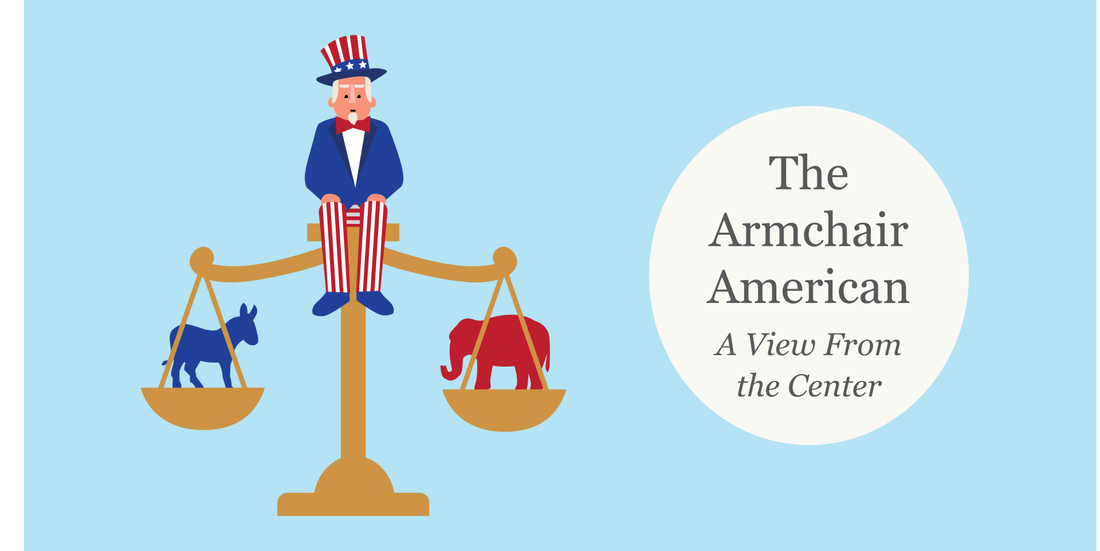
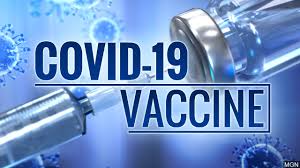

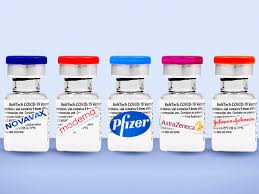
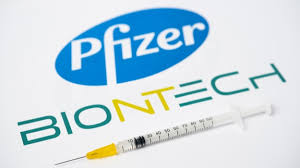



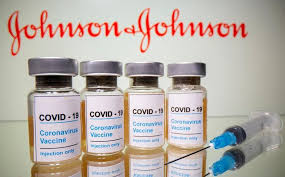
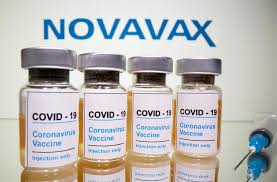
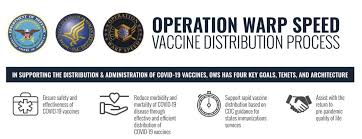
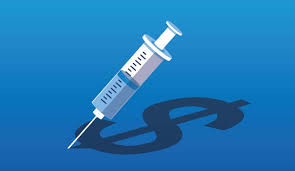

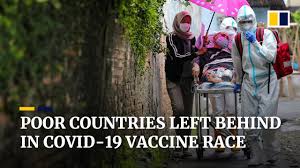



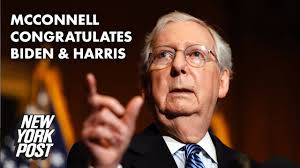


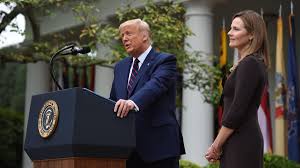






 RSS Feed
RSS Feed